THE year was 1915, the date was sometime in the first week of March. A fierce conflict was raging throughout Europe on an unprecedented scale and in a sleepy corner of Monmouthshire, Col. W.D Steel, Col. A.Pearson, Mayor Zachariah Wheatley, the Marquis of Abergavenny and the Hon. Mrs Duberley decided to get in a motorcar and risk the raging currents of the Usk by crossing the river on a makeshift wooden bridge.
Just like the old railway bridge visible in the background, the temporary wooden structure has since been washed away by the tides of time. It was dismantled not long after the photograph was taken and it only existed in the first place because of World War One.
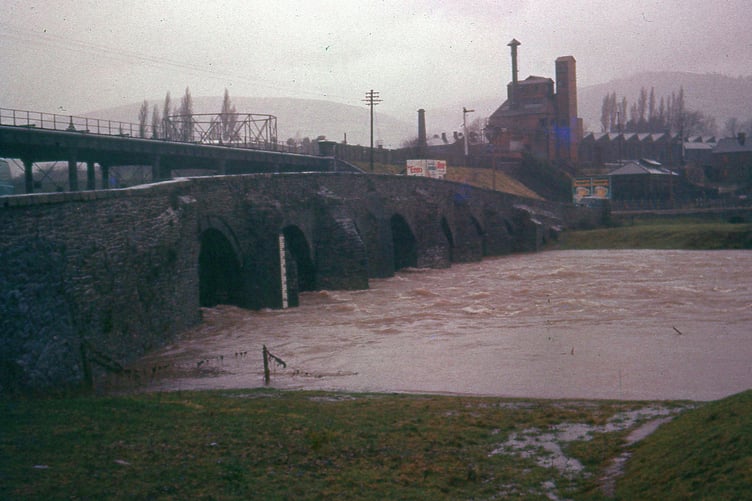
The story begins with Mayor Wheatley who is standing behind the bonnet of the car in the pic and gazing at the camera with, depending on your point of view, furious intent or mild interest.
Wheatley, who was originally from Coventry, helped officiate at the London Olympics in 1908 and owned a successful jewellery business in the town. He was already a senior Alderman of the borough and instrumental in the Abergavenny Amateur Athletic Association, but he became even more of a major player in the history of the town when war broke out.
When Abergavenny’s existing mayor (Lt.Col. J.H. Gilbert Harris) and the Deputy Mayor (Alderman J.G. Bishop) were mobilised for service at the beginning of the conflict, Alderman Wheatley took over memorial duties on August 4, 1914. Wheatley, who would later be remembered as the town’s “War Mayor” was Abergavenny’s first citizen for the duration of the conflict. He was knighted for his services and in subsequent years was made a Welsh bard by the Gorsedd of the National Eisteddfod and given the title “Mear herd y Fenni” (Mayor of Peace).
As the President of the Abergavenny War Savings Association, Sir Wheatley helped raise a staggering £300,000 to help the cause. It was because of such efforts that Abergavenny was once presented with a tank to call its very own.
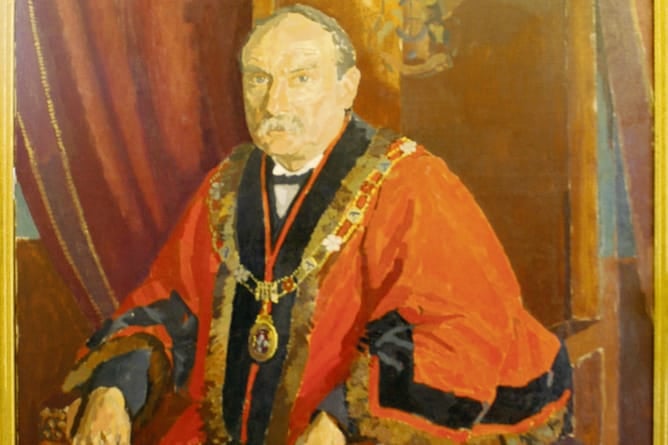
As well as working tirelessly for various groups and committees, Sir Wheatley also did a lot of work on his own initiative for soldiers and their dependents. The Chronicle reported, “He was at their beck and call at all hours and never stinted himself to render them help and advice.”
Wheatley once said, “I always felt during the five years of my office that the men who had gone forth to fight were fighting for my family and I. The least I could do was help those who were left behind.”
Anyhow, back to the town’s very own version of “The Bridge over the River Kwai.” In the early days of The Great War, Sir Wheatley arranged for many of the Welsh Army Corps to stay in Abergavenny with local families during their training. The Chronicle at the time reported that Sir Wheatley’s actions, “will give a much-needed impetus to local trade and keep a large number of housewives busily employed.”
It was during their stay in town that members of the Royal Engineers decided to put all their training to good use and construct a trestle bridge across the River Usk. The Chronicle reported, “The river was very high and was running strongly and swiftly, and even while the work was in progress the water rose over two feet. Despite the difficulties the work was successfully and efficiently accomplished and Abergavenny now has the honour of being the location of the first river bridge formed by the Welsh Army Corps.”
Under the supervision of Col A. Pearson, the troops used ropes and timber, all purchased locally at a cost of £100, to navigate a width of 126 feet. The Colonel can be seen behind the wheel of the car and looking like a man who wishes he was anywhere in the world but crossing a rickety bridge over a river whose average depth at the time of construction was seven feet and whose velocity of current was 180 feet per minute.
Yet thanks to military thoroughness the running was smooth and everything went off without a hitch. Yet just in case the Colonel’s worst fears were realized, and the bridge collapsed and the car was swept into a river like mother nature’s plaything, a rescue boat had been built in readiness by the engineers and there were a number of life buoys, and hooks on hand in case the party of the great and good got swept downstream.
To the right of Colonel Pearson, is Colonel W.D. Steel, looking dapper and nonchalant about crossing a wide expanse of water in a potential death trap. Not to be confused with Captain O.W.D. Steel, who was a doctor in civilian life, and was awarded the Military Cross during the First World War.
Colonel Steel once wrote of the third Monmouthshire Regiment in the book “On The Western Front, “The Abergavenny company wore bulldogs on their shakos, and were known as the ‘Bulldogs’, a nickname due to a special breed of dog peculiar to the town. I can just remember the last of these dogs owned by the old town crier. At his death, the strain died out.’”
Last but not least, in the back we have Mrs. Duberley and the venerable Marquis William Nevill. His lordship looks to all extents and purposes like he is having the time of his life in the way only 88-year-olds who never expected to experience such novel experiences during the sunsets of their life can.
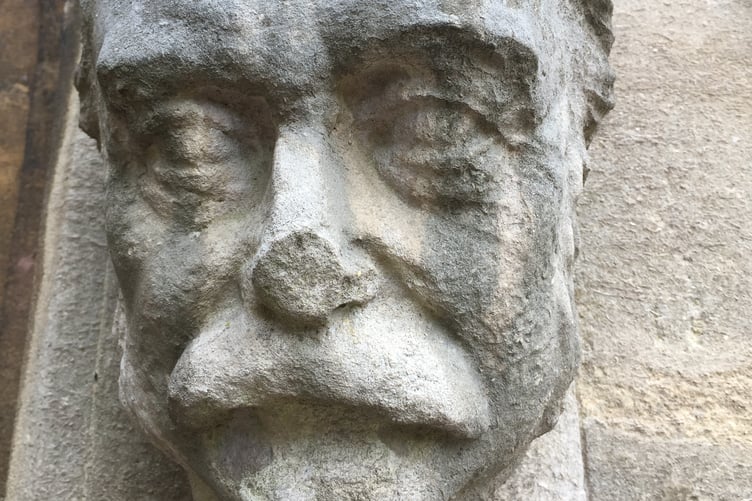
Also known as the 5th Earl of Abergavenny, the 1st Earl of Lewes, the 21st Baron Bergavenny, and, last but not least, the ‘Tory bloodhound,’ you’ve probably passed the stone likeness of the Marquis in Abergavenny without realizing it.
He’s one of the stone heads that are stuck like literary gargoyles on either side of the entrance to the town’s old library.
The generous Lord officially opened Abergavenny Library on September 8, September 8, 1906. The Mayor of London, Sir Walter Vaughan was also present. The man responsible for its funding was not. His name was Andrew Carnegie. He’s the stone head on the left and was once known as the richest man in the world.
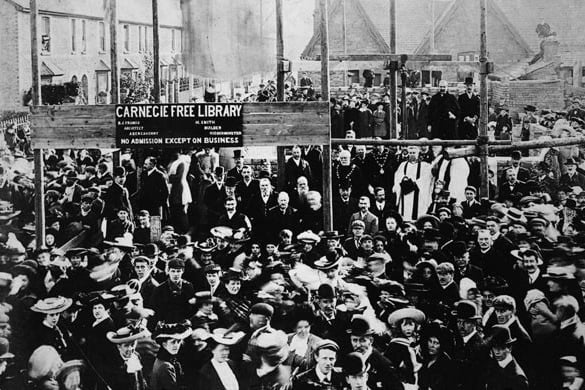
The Marquis was greatly interested in the welfare of the town and was often described as a spirit of generosity. He helped improve the town’s waterworks, made considerable donations to the workhouse, financed the building of Abergavenny’s cricket ground, bowling green, and pavilion, played a key role in the restoration of Abergavenny’s Charter, and let the Castle and grounds to the Council as a recreation area on generous terms. Something which his ancestors continue to do to this day. He also gave the old Nevill Hall manor house its name and lived there for a number of years.
In 1899 he refused the Mayorship of Abergavenny but became the town’s first honorary freeman instead. In addition, he paid for and presented the first mayoral chain of office to the town.
Upon his death in December 2015, it was also reported that “It is no exaggeration to say that Abergavenny has lost the best friend it ever had.”
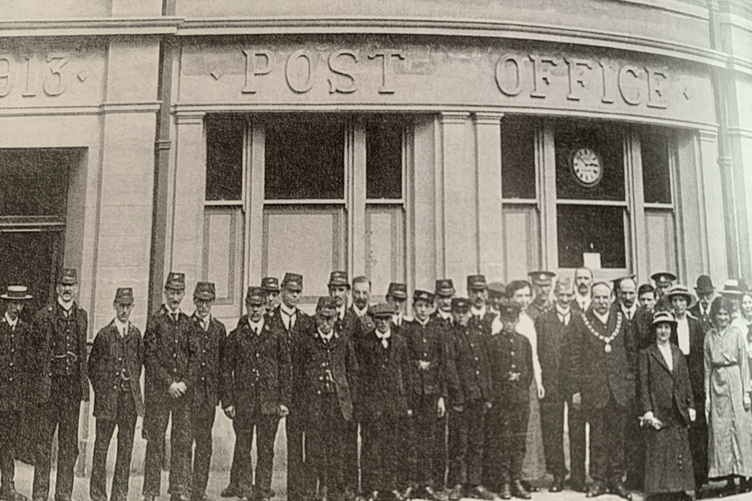
The Marquis was apparently delighted to cross the Usk in such a manner during his last year on earth. He roared his approval to the engineers who are sadly missing from the photo and positioned on the north side of the river. The assembled men cheered loudly when the car finally reached terra firma. Keen to reward their hard work and celebrate the general spirit of joviality, the Marquis handed out packets of tobacco to all the troops.
Sadly, they didn’t have much time to sit and enjoy a smoke in the spring sunshine, because no sooner had the great and good departed than it was time for the engineers to give the structure they had made a severe and sound testing. They marched across the bridge in fours and when the last man’s boots hit the bank, they began the process of dismantling it, which records indicate took little over an hour. How’s that for leave no trace?
Its existence may have been short-lived and its purpose pretty pointless in the grand scheme of things, but nevertheless, if they deemed the bridge over the river Usk was worthy of a photograph way back when, then it’s definitely a tale worth telling right here and now.
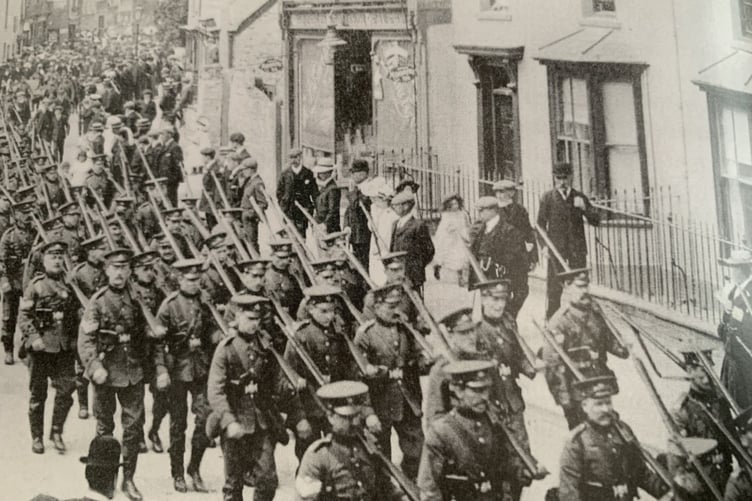
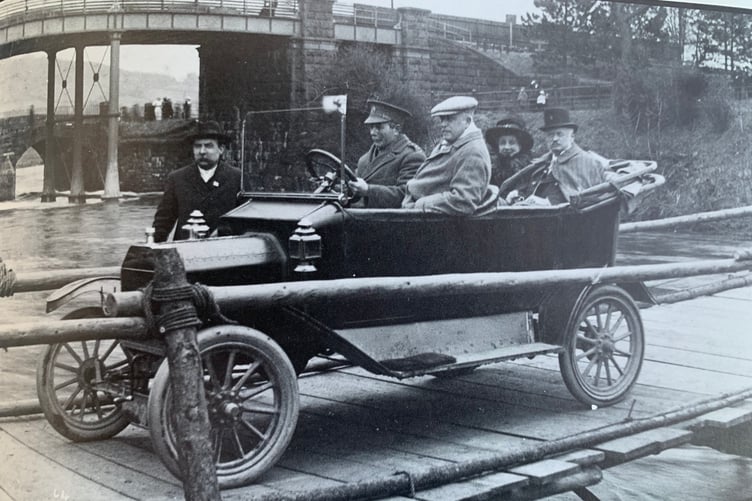
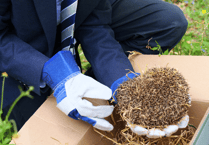
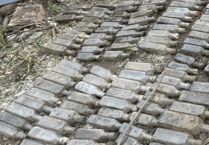

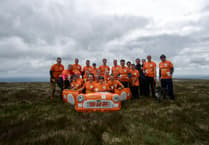
Comments
This article has no comments yet. Be the first to leave a comment.